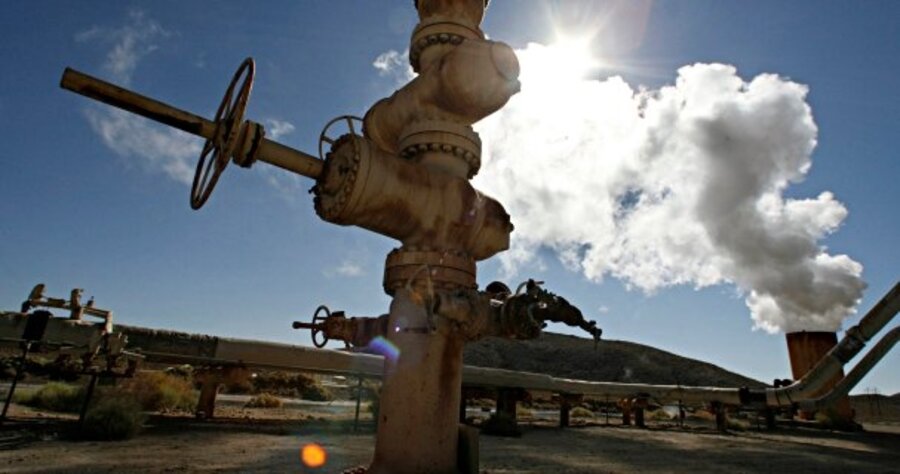California jumps to front of global-warming fight
Loading...
| Los Angeles
California's new carbon-emissions rules – the toughest in the United States – come at a propitious time for those anxious to curb global warming.
The plan is likely to pass muster with an Obama administration, eager to fight climate change, and could serve as a model for other states. It also sends a message internationally. The state's effort to reduce the average Californian's carbon "footprint" – from 14 tons per year to around 10 tons by 2020 – is an ambitious goal that is attracting foreign attention.
“As world leaders meet in Poland to negotiate an international climate deal, California regulators set an international and national standard for how to meet aggressive targets to cut global-warming pollution that will create a high-wage, clean high-tech economy,” said Derek Walker, director of the California Climate Initiative of the Environmental Defense Fund (EDF). On Friday, the United Nations’ was nearing the end of its climate negotiations in Poznan, Poland.
The California Air Resources Board – the body charged with overseeing the implementation of the state's 2006 Global Warming Solutions Act (AB32) – unanimously approved the roadmap of strategies that sets out the details of how annual emissions will be cut.
Seven Western states (Arizona, California, Montana, New Mexico, Oregon, Washington, and Utah) and four Canadian provinces (British Columbia, Manitoba, Quebec and Ontario) have followed California’s lead by pledging to cut greenhouse gas emissions as part of a Western Climate Initiative.
“Once again, California leads the nation in environmental laws,” says Robert Stern, president of the Center for Governmental Studies, a political reform and community development group in Los Angeles. “What is ironic is that it is a Republican governor who is the catalyst for this action, since past environmental innovations in California have been opposed by the Bush administration. With a new Democratic administration about to take over the federal government, it is unlikely that the federal government will drag its heels and make any attempt to undercut the California and Western state effort in this area. In fact, this effort might be the model for federal action.”
Some in the business community are critical, saying that the new rules will sock consumers with billions of dollars in increased electricity and natural gas prices, new carbon and water fees, high building costs, rents, and mortgages.
“California consumers and businesses deserve to know what the cost of AB32 implementation means to them now and into the future," said Dorothy Rothrock, spokesman for the California Manufacturers and Technology Association, and cochair of the AB32 Implementation Group, a statewide coalition of more than 180 businesses. "The AB32 scoping plan is very ambitious and we need to get it right if we expect other states, the nation, and the world to align with California’s model.”
But some political experts say the effort will become a new model for the Obama administration. They claim it will increase gross state product by $76 billion, boost household incomes by $48 billion, and create as many as 403,000 jobs in a new, clean-energy economy.
“California already leads the nation in clean-tech investment,” said James Fine, EDF economist and policy scientist. “The Air Resources Board’s approval of its plan to implement the Global Warming Solutions Act will reinforce this trend. Our state is well-positioned to make enacting this law an opportunity, both economically and environmentally, rather than a burden, as some naysayers suggest. By approving the action plan, ARB is acknowledging definitively that the most expensive option for California is inaction in fighting global warming.”





